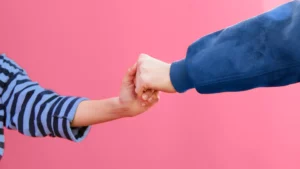In the diverse spectrum of human sexuality, bisexuality stands as a unique intersection where individuals find themselves attracted to both men and women. Understanding and accepting one’s sexual orientation is a profound journey, often filled with self-doubt, introspection, and revelation. This article aims to provide a comprehensive guide to understanding bisexual signs, and the process of self-realization. Remember, while signs can hint towards a certain orientation, they are never definitive – each person’s journey to discovering their identity is deeply personal and unique.
Contents
- 1 What Is Bisexuality?
- 2 What Are Some Bisexual Signs To Look For?
- 2.1 Attraction to Both Genders
- 2.2 Shifting Preferences Over Time
- 2.3 Crushes and Relationships
- 2.4 Sexual Fantasies
- 2.5 Feeling a Connection with Bisexual Culture
- 2.6 Questioning Your Sexuality
- 2.7 Reacting to Same and Opposite-Gender Romantic Content
- 2.8 Comfort and Joy in Bisexual Spaces
- 2.9 Discomfort with Monosexual Labels
- 2.10 Defensiveness About Bisexuality
- 3 Common Myths And Misconceptions About Bisexuality
- 4 Conclusion
What Is Bisexuality?
 Bisexuality is a sexual orientation that refers to an individual’s potential to feel emotional, romantic, or physical attraction to both men and women. It is important to note that the level of attraction doesn’t have to be equally split between genders. Some individuals may feel more attracted to one gender over the other at times, or the level of attraction may fluctuate over time. The core aspect of bisexuality lies in the capacity to experience attraction towards both genders, regardless of the intensity or frequency of such attractions.
Bisexuality is a sexual orientation that refers to an individual’s potential to feel emotional, romantic, or physical attraction to both men and women. It is important to note that the level of attraction doesn’t have to be equally split between genders. Some individuals may feel more attracted to one gender over the other at times, or the level of attraction may fluctuate over time. The core aspect of bisexuality lies in the capacity to experience attraction towards both genders, regardless of the intensity or frequency of such attractions.
Bisexuality exists on a spectrum, often referred to as the “bi+ spectrum” or “bisexual umbrella,” that includes various other identities such as pansexuality, queerness, and fluid sexuality. Each person experiences their bisexuality differently, shaping their unique identity within this spectrum. Therefore, bisexuality is not a rigid or restrictive label, but rather, a flexible identifier that encompasses a wide range of experiences and attractions.
What Are Some Bisexual Signs To Look For?
Understanding one’s sexual orientation is a deeply personal and individual journey. And no definitive list of “signs” can definitively determine if someone is bisexual. However, some common experiences or feelings among people who identify as bisexual can serve as potential indicators. It’s also important to remember that experiencing these signs doesn’t necessarily mean one is bisexual – they’re simply a starting point for self-exploration.
Attraction to Both Genders
Attraction is an integral aspect of one’s sexuality. If you’re bisexual, you might find that you are attracted to both men and women. This can manifest in various ways – you might appreciate the physical aesthetics of both genders, feel emotionally connected to individuals of both genders or have romantic feelings toward them. Remember, the degree of attraction does not need to be equally divided among the genders. You might find that you’re more often attracted to one gender, but still experience attraction to the other.
Shifting Preferences Over Time
Sexual fluidity is a common experience among those who identify as bisexual. Your attraction to different genders might shift over time. This phenomenon sometimes referred to as a “bi-cycle,” involves alternating periods of preference for one gender over the other. For example, you might find yourself more attracted to men during a certain period and then later find your interest shifting towards women, or vice versa.
Crushes and Relationships
 Reflecting on your past and present crushes can offer insight into your sexual orientation. As a bisexual individual, you might realize that your romantic interests span across genders. You might have been or can see yourself being, in a romantic relationship with either a man or a woman. It’s important to note that your past relationships do not define your sexuality. Rather, it’s about who you can imagine yourself being with in the future.
Reflecting on your past and present crushes can offer insight into your sexual orientation. As a bisexual individual, you might realize that your romantic interests span across genders. You might have been or can see yourself being, in a romantic relationship with either a man or a woman. It’s important to note that your past relationships do not define your sexuality. Rather, it’s about who you can imagine yourself being with in the future.
Sexual Fantasies
Your fantasies can provide clues about your sexual orientation. If you identify as bisexual, you might find that your sexual fantasies are not limited to one gender. However, it’s crucial to remember that fantasies do not equate to real-world desires or actions. It’s perfectly normal for people to fantasize about situations they wouldn’t want to engage in in real life. Therefore, while fantasies can be an indicator, they should not be the sole determinant of your sexuality.
Feeling a Connection with Bisexual Culture
Identifying with the bisexual community or bisexual representation in media can indicate bisexuality. You might resonate with the experiences of bisexual characters in books, movies, or TV shows. Similarly, hearing someone describe their journey of discovering their bisexuality might evoke feelings of understanding or identification. This sense of connection could be a hint towards your own sexual orientation.
Questioning Your Sexuality
If you’re frequently contemplating your sexual preferences and questioning whether you could be attracted to both men and women, this could suggest bisexuality. This questioning could manifest as an internal dialogue, where you find yourself weighing up your attractions and feelings towards different genders. Remember, questioning is a normal part of understanding your sexual orientation and isn’t something to be rushed or forced.
Reacting to Same and Opposite-Gender Romantic Content
Media content can often help us understand our feelings better. If you find yourself reacting, either emotionally or physically, to romantic or sexual scenes involving both men and women in books, movies, or other types of media, this could suggest potential bisexuality. However, it’s crucial to note that our responses to fictional situations do not definitively determine our sexual orientation, but can provide us with insights.
Comfort and Joy in Bisexual Spaces
If you feel a sense of belonging, acceptance, and happiness in spaces or communities that cater to bisexual individuals, this could be an indication of bisexuality. These spaces might include online forums, social media groups, or physical meeting places like LGBTQ+ centers. The sense of community and understanding found in these spaces can help many people come to terms with their sexual orientation.
Discomfort with Monosexual Labels
Feeling unease or discomfort when identifying exclusively as straight or gay could suggest bisexuality. You might find these labels constraining or feel they don’t fully capture your range of attractions. It’s common for many bisexual individuals to initially identify as straight or gay before realizing that these labels don’t encompass their full sexual identity.
Defensiveness About Bisexuality
If you find yourself getting defensive when people question the validity of bisexuality or insist that everyone must be either straight or gay, this might suggest a personal connection to bisexuality. This defensiveness could stem from a subconscious identification with bisexuality, even if you haven’t consciously recognized this part of your identity yet.
In all of these potential bisexual signs, remember that self-identification is key. Your sexual orientation is ultimately for you to determine. If you’re questioning your sexuality, consider seeking support from LGBTQ-friendly resources, such as therapists or support groups. This journey of self-discovery should be carried out at your own pace, with kindness and acceptance towards yourself.
Common Myths And Misconceptions About Bisexuality
 While society’s understanding of bisexuality has improved over time, many misconceptions still persist. These myths can contribute to biphobia or bi-erasure, causing harm to those who identify as bisexual. Let’s address some of these common myths and misconceptions:
While society’s understanding of bisexuality has improved over time, many misconceptions still persist. These myths can contribute to biphobia or bi-erasure, causing harm to those who identify as bisexual. Let’s address some of these common myths and misconceptions:
- Bisexuality is Just a Phase
Many people incorrectly believe that bisexuality is a temporary phase or a stop on the way to identifying as gay or lesbian. However, bisexuality is a valid, stable sexual orientation, just like heterosexuality and homosexuality.
- Bisexuals are Equally Attracted to Men and Women
Bisexuality is often misunderstood to mean an equal attraction to both genders. However, many bisexual individuals experience fluid attractions that can shift over time. A person who identifies as bisexual may be attracted to different genders in different ways and to varying degrees.
- Bisexuals are Promiscuous and Cannot Be Monogamous
This harmful stereotype posits that bisexuality is synonymous with infidelity or inability to commit. However, sexual orientation is separate from one’s personal values and decisions about relationships. Bisexual individuals, like individuals of any other sexual orientation, can choose to be in monogamous relationships.
- Bisexual People are “Greedy” or “Confused”
These labels imply a lack of certainty or a desire to ‘have it all.’ Bisexual people are not confused; they are simply capable of being attracted to both men and women. Being bisexual is about the potential for attraction, not about acting on every potential attraction.
- You’re Only Bisexual if You’ve Dated Men and Women
This is not true. Sexual orientation is about attraction, not action. A person can identify as bisexual based on their feelings and attractions, regardless of their dating history.
- Bisexuality Doesn’t Exist
Some people deny the existence of bisexuality altogether, insisting that people are either straight or gay. This belief erases and invalidates the experiences of those who are attracted to both men and women. Bisexuality is a valid sexual orientation that exists on the spectrum of human sexuality.
Conclusion
In conclusion, recognizing bisexual signs can be a significant step on your journey toward understanding and embracing your authentic self. The potential indicators we’ve discussed, ranging from fluctuating attractions to both genders to a sense of belonging in bisexual spaces, can provide valuable insights into your personal identity. Remember, these signs are not a definitive test or checklist but a starting point for introspection. The experience of bisexuality, like any sexual orientation, is deeply personal and varied.
Bisexuality is a valid and rich aspect of the broad spectrum of human sexuality, and it deserves recognition and respect. Life may sometimes be challenging for bisexuals, but Online Bisexual Counseling can help. Get experienced LGBTQ therapists at PrideMantra: Book a trial LGBTQ therapy session


